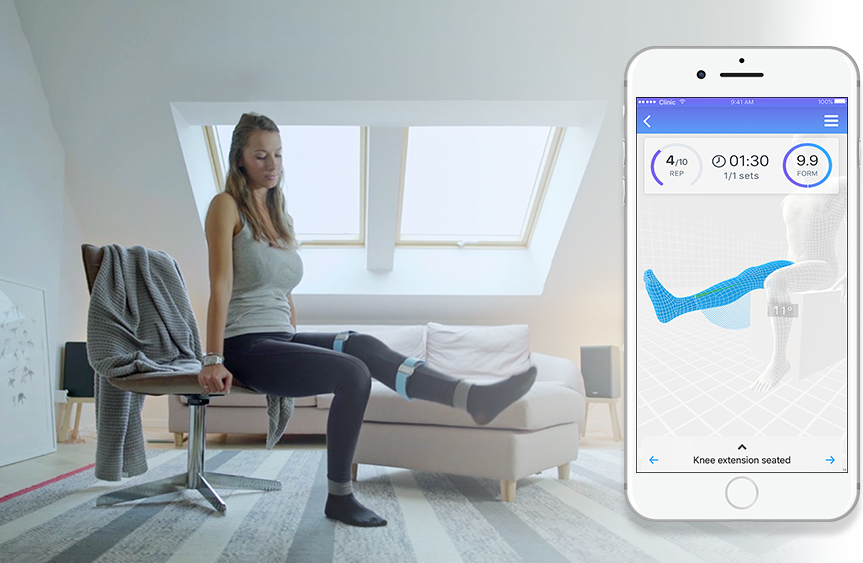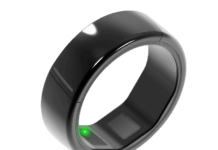re.flex – Recovery made simple
The story of a World Champion can change the way we see physiotherapy
Can you imagine life without physiotherapy? If you’ve never passed through an orthopedic episode before, as a patient, you wouldn’t care that much. But if you felt the joy of returning to your activity after an injury or surgery, you will understand how important physiotherapy is. You will also learn that the physiotherapist is always fighting alongside you in this battle for returning to your previous life and regaining your function.
The problems
Patients are unaware that physiotherapists have their own battles to fight. Working with so many patients leaves the physiotherapists exhausted and not always happy at the end of the day. Why is that?
Because an increasing number of patients are waiting for their help, and some of them need immediate attention. Other patients quit physiotherapy before they are fully recovered. Statistics are frightening: 1 out of 4 adults, (that’s 104M people in Europe) experiences long-term musculoskeletal incidents determined by injuries and other related causes. Some patients need a physiotherapist and can’t reach the clinic because of age, distance, or the severeness of the injury.
And so many other problems…
But the physiotherapists are only human beings. How can they fight alone with all the problems of the patients?
The managers or owners of the physiotherapy clinics and hospitals have their own problems they try to solve. Scaling the clinic and finding ways to increase the revenue often leaves them with only two solutions: buy more clinical space and hire more physiotherapists; preferably senior physiotherapists. But clinical space is not that easy to get. Neither are senior physiotherapists, that are on high demand and the clinics are desperately chasing them. Another option can be opening a new clinic. But for this to be a successful move, the patient experience should not vary from one staff member to another. To solve this problem, physiotherapists must follow precise clinical protocols and measure the patient’s progress in order to provide clear results. Most of the clinics have to manually record this data.
So for every patient, after every session of physiotherapy, the clinician should measure the ROM and check their progress. Even though it’s very useful to take measurements, this process takes 15-20 minutes and is not feasible because some physiotherapy clinics provide 30-minute sessions while others work with groups of patients, meaning that one physiotherapist assists 3-5 patients at a time.
That’s why just a small percentage of clinics manage to successfully grow their business.
So is there something that can address all these issues?
The story
In 2015, a Brazilian Jiu-Jitsu fighter injured his knee and understood that physiotherapy was the only way for him to save his career.
He visited multiple clinics and after a few cycles of physical training, he felt strong again.
He was sent home with a printed paper that described the exercises he needed to do, in order to continue his recovery. That old-fashioned way of delivering the treatment was inefficient because the exercises were difficult to follow. When he returned to the top competitions, his knee collapsed again and this time it was a serious injury.
So what went wrong? Physiotherapy was good, physiotherapists were friendly and they had good intentions. The question still stands, what went wrong? The measured outcome of the recovery was the problem. Nobody actually measured it. Why? Because they didn’t have the time to do it.
It’s the story of Camil Moldoveanu (4 x World Champion and 6 x European Champion in Brazilian Jiu Jitsu) and IT entrepreneur. This events inspired him to create re.flex and helped him, as CEO of the company, to raise a consistent seed round and bring to the table valuable strategic partners.
re.flex uses two motion detection sensors that are connected to a mobile app.
The solution enables patients to finish their last stage of the physical rehabilitation at home, under the physiotherapist’s supervision. All they have to do in order to get it started is place the sensors on the injured leg and follow the app.
With a complex movement algorithm, re.flex sensors are able to generate a unique and accurate 3D real-time visualization, that comes along with a database of video exercises, that allows patients to better understand the movements and get immediate feedback.
A two-way communication system is also available in the app for the times when the patients have urgent questions or the physiotherapist needs to intervene.
The physiotherapist no longer has to manually measure patients and struggle for ways to show patients the progress of their rehabilitation.
The app captures real-time data about patients’ activity, counts the repetitions and is also capable of showing the quality of the movements, based on the input of the physiotherapist. An assessment module that analyzes healthy leg versus injured leg sets the outcomes of the recovery and shows the patient where he is in the recovery timeline versus where he should be. Physiotherapists can access easy-to-understand reports about patient adherence, pain, flexion and quality of the movement.
Managers use the app as a quality control tool to see how the clinical protocol is followed.
They can scale the business with junior physiotherapists to review patients’ activity and have a clinic that is not dependant on space. Last but not least, insurance companies can access data about patients’ adherence and they are able to see what protocol a specific patient followed.
re.flex will be launched in Germany, in Q4 this year. Around 150 patients used it so far in their recovery and three pilot studies are in progress in UK, Germany and Romania. Partners benefit program will soon be closed. It’s the last chance to join our German community of clinics and experts. Sign up on www.reflex.help and help to innovate the physiotherapy industry.



















